According to the State of the Worlds Plants Report 2017, there are at least 28,187 plants that are recognized as medicinal. However, we use only a small percentage of these plants. Additionally, there are probably many more medicinal plants that are currently unknown. We’ve lost much of the ancient knowledge of medicinal plants. One of my goals in life is to document some of these herbs and get the word out on how to use them.
Medicinal plants are growing in every state in the United States, and it is impossible for me to list them all here. One problem I often encounter is that plants often have different names in different areas of the country. Here I list some of the most popular wild medicinal herbs and some less known varieties to stretch your knowledge. I’ve grouped them by the states where they grow. Check out the plants that grow in your state.
Related: 10 Potent Plants That Kill Pain Fast
Plants Growing in the Northern US States
The northernmost states of the US are home to a great many medicinal plants. These states, include Connecticut, Massachusetts, Rhode Island, New Hampshire, Maine, Vermont, New York, Michigan, Wisconsin, Iowa, Minnesota, South Dakota, North Dakota, Montana, Idaho, Oregon, and Washington.
Many of the plants listed here grow further south into the central US as well.
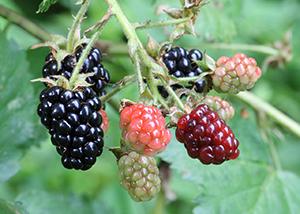
Blackberries are medicinal and delicious. The leaves, stems, and roots are an effective treatment for dysentery, diarrhea, and as a poultice for treating cuts and inflammation. They are anti-inflammatory and astringent.
Blackberries are native to the north temperate regions of the US, and they are abundant in the eastern state and on the Pacific coast.
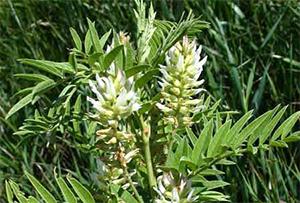
Native to most of the northern and central United States, Wild Licorice (Glycyrrhiza lepidota), grows from central Canada south to California, Texas, and Virginia.
The plant treats a wide range of diseases from coughs, diarrhea, chest pain, fevers, to digestive issues.
It speeds the delivery of the placenta in childbirth and as a poultice on swollen tissues and sores. Chewed, it relieves toothache and sore throats.
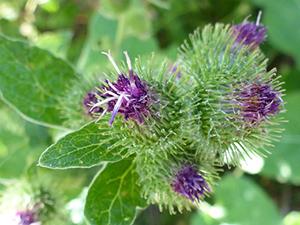
Lesser Burdock, Arctium minus, or cocklebur is an annoying weed that is valuable medicinally. It is highly effective in treating poison ivy, poison oak, and other skin irritations.
It is my go-to plant for skin issues. It detoxifies the body, supports the liver, reduces inflammation, and stimulates digestion. It is common to the northeastern and northwestern United States.
These medicinal plants are common across the Northeastern United States:
- American Basswood
- American Holly
- Ashleaf Maple
- Barberry
- Basswood
- Bindweed
- Bittersweet
- Black Birch
- Black-eyed Susan
- Black Raspberry
- Black Walnut
- Broadleaf Plantain
- Burdock – here you can find How to Cook Burdock
- Cabbage
- Cattail
- Chicory
- Colt’s foot
- Dogwood
- Eastern Redcedar
- English Yew
- Ginkgo biloba
- Goldenrod
- Hawthorn
- Indian Pipe
- Juniper
- Maple
- Oak, Red, and White
- Poke
- Pokeweed
- Rattlesnake Root
- Spotted Tough-me-not, Impatiens capensis
- John’s Wort
- Staghorn Sumac
- Stinging Nettle
- Stink Tree
- Sweet Birch
- Sycamore
- Tree of Heaven
Related: 5 Medicinal Plants that My Grandmother Grew in Her Backyard
Medicinal Plants of the Central US
Consisting of the states in the center of the country, the Central US states are home to most of the plants growing in the north, plus many more. These states are sometimes further divided into the Eastern United States and the Western US. The plants growing in the east are often different from those in the west, so I have divided these two regions out separately. The central US states include North Dakota, South Dakota, Nebraska, Kansas, Oklahoma, Texas, Minnesota, Iowa, Missouri, Arkansas, Louisiana, Wisconsin, and Illinois. The eastern states of Indiana, Ohio, Kentucky, Tennessee, West Virginia, Mississippi, and Alabama are also considered to be central states. In these states watch for:
- Acorus calamus
- Aloe vera
- Artemisia campestris
- Artemisia cana
- Artemisia tridentate
- Ambrosia artemisifolia
- Ambrosia trifida
- Asclepias incarnata
- Asclepias speciosa
- Asclepias stenophylla
- Asclepias viridiflora
- Asclepias verticillata
- Antennaria parvifolia
- Blackberries
- Black-eyed-Susan
- Cabbage
- Calendula
- Dandelion – here you can find How to Make Dandelion Jelly
- Echinacea angustifolia
- Fraxinus americana
- Fritillaria atropurpurea
- Garlic – here you can find How to Make Black Garlic for Immune System
- Gutierrezia sarothrae
- Hymenopappus tenuifolius
- Impatiens pallida
- Liatris punctata
- Lygodesmia juncea
- Roses
- Sagittaria latifolia
- White Willow
- Wild Licorice
- Yucca glauca (Soapweed)
Medicinal Plants of the Eastern US
The eastern US includes the east coast states and the Appalachian states. These states include Southern New York, Pennsylvania, North Carolina, South Carolina, West Virginia, Tennessee, Alabama, Kentucky, Ohio, Maryland, Mississippi, Arkansas, Oklahoma, and sometimes Texas. You’ll find many of the plants from the Central US as well as many others:
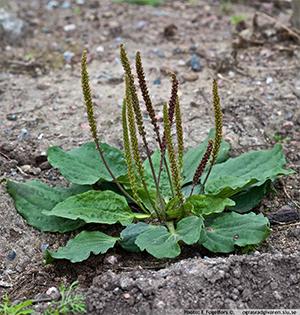
Broadleaf Plantain, also called common plantain, Plantago major, is excellent for use as a poultice for treating skin problems, stopping bleeding, and healing wounds.
It is used to treat gastritis, ulcers, IBS, diarrhea, bronchitis, asthma, hay fever, and many other conditions. Plantain grows in the eastern and central US states.
This plant is often found growing in the cracks of sidewalks and on any patch of abandoned soil.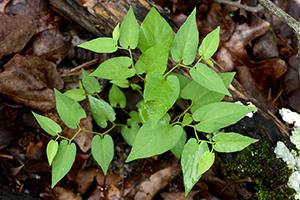
Virginia Snakeroot, Aristolochia serpentaria, is native to Appalachia and the eastern US from Connecticut to southern Michigan and south to Texas and Florida. The plant is famous for its use for snakebite, but it is also effective against stomach ailments, fever, high blood pressure, and other medical problems.
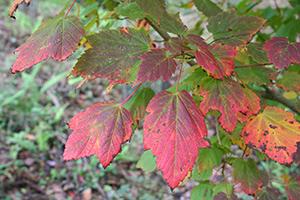
Mountain Maple, Acer spicatum Lam., is native to the Appalachian states from southern New York to northern Georgia and Alabama, including the states of Pennsylvania, North Carolina, South Carolina, Alabama, West Virginia, Tennessee, Alabama, Kentucky, and Virginia at higher elevations. It is used to treat wounds, skin infections, and as a poultice or infusion to treat eye infections. An infusion is also used to treat internal bleeding.
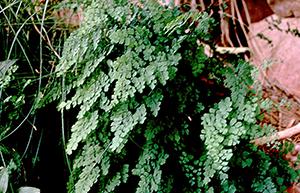
Southern maidenhair fern, Adiantum capillus-veneris. This edible and medicinal herb is used to treat coughs, sore throats, and bronchitis.
Applied externally, it treats snake bites, insect bites, headaches, and chest pains. Southern maidenhair firm is found in the southeastern US.
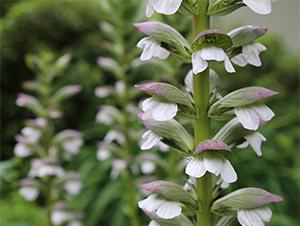
Unicorn root (Aletris farinosa), is also known as star grass, colic root, true unicorn root, and ague root.
The plant is well known for treating repeated miscarriages, infertility, female complaints, anemia, digestive complaints, and convulsions.
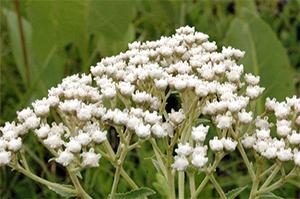
Wild Quinine or American feverfew, Parthenium integrifolium, is a potent herb that stimulates the immune system, treats respiratory infections, gastrointestinal illnesses, venereal disease, and kidney problems, including dissolving kidney stones.
Use it as a poultice to treat burns and skin problems. Wild quinine is native to the eastern states, from Maryland to Minnesota and Georgia and west to Wisconsin and Arkansas.
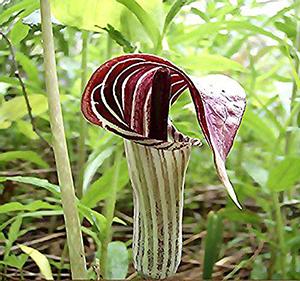 Jack-in-the-pulpit, bog onion, Indian turnip, or brown dragon (Arisaema triphyllum) is useful partially dried as a contraceptive.
Jack-in-the-pulpit, bog onion, Indian turnip, or brown dragon (Arisaema triphyllum) is useful partially dried as a contraceptive.
A decoction is helpful for sore eyes, and the root applied as a poultice is beneficial to treat headaches, sores, boils, ringworm, and rheumatism pain.
You’ll also find:
- Black-Eyed Susan
- Boneset
- Diervilla lonicera
- Echinacea purpurea
- Equisetum arvense
- Euonymus atropurpureus
- Eupatorium perfoliatum
- Impatiens Pallida
- Lycopus Virginicus
- Magnolia grandiflora
- Malus fusca
- Oxydendrum
- Papaya (Florida)
The Southern US Medicinal Plants
The plants of the southern US vary greatly from east to west, so I have broken them down by region. Look for these plants in your home state:
Southwestern United States — Medicinal Plants of the Desert States
The desert states can be unforgiving with daytime temperatures topping 120 F in the summer and desperately cold nights in the winter.
Complicating these temperatures with dry air and very low rainfall means that only the toughest plants will survive. Even so, the desert is home to an abundance of medicinal plants.
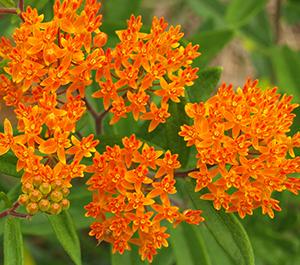
Pleurisy-root or Butterfly Weed (Asclepias tuberosa) grows in the US Southwestern desert. As its name suggests, it has beneficial actions on the lungs, especially in reducing inflammation and acting as a mild tonic.
It relieves the difficulty of breathing in pleurisy and consumption. It is also used to treat diarrhea, dysentery, rheumatism, and eczema.
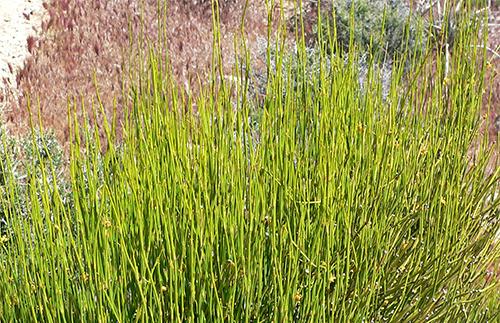
Mormon Tea (Ephedra Viridis) is still used in the southwestern United States to treat urinary tract infections, respiratory problems, colds, and congestion.
It grows in the Southwest at elevations of 3,000 feet to 7,500 feet.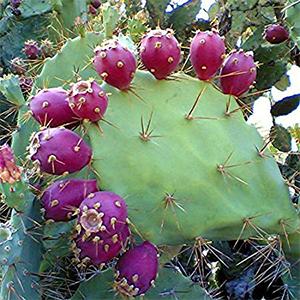
Prickly Pear Cactus is an incredible anti-inflammatory and has many medicinal uses. It lowers “bad” cholesterol levels, reduces the need for insulin in some diabetics, stabilizes blood sugar and has many beneficial components including high fiber.
Prickly pear cactus is native to the desert states, but it can be grown in dry areas across the south.
Another cactus known for its medicinal use and alcohol production is agave. The plant has antibiotic, antiviral, and fungicidal properties.
The sap of the mesquite tree makes an antiseptic or eyewash when boiled and diluted with water. The decoction also treats sunburns and chaffed skin.
Also, look for:
- Yucca
- Chia sage
- Anemone tuberosa (Desert anemone)
- Aloe vera
- Horsetail or Scouring Rush
- Pectis angustifolia
- Delphinium scopulorum
- Sambucus canadensis
The Southwestern Pacific Coast
The Pacific coast of California, Oregon, and Washington are fertile areas with good growing conditions. These states are rich with medicinal plants, including:
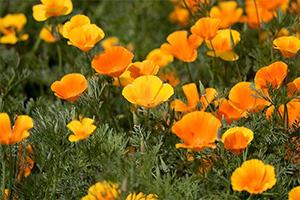
California Poppy, Eschscholzia californica, is the official state flower of California, but it is also native to Oregon, Washington State, Nevada, Arizona, and New Mexico.
This opioid plant relieves anxiety and relieves pain.
Related: 79 Edible Flowers in North America (with Pictures)
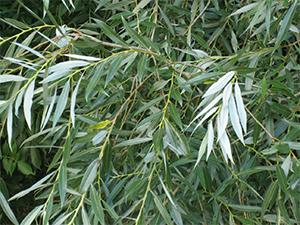
White Willow, Salix alba is well known for its use in pain relief and reducing inflammation. The bark of the white willow tree is the original source for salicylic acid, also known as aspirin.
White willow trees grow across the southern and central US states and along the western US in zones 3 to 8.
Also, look for:
- Wild Licorice
- Pulsatilla
- Black Cohosh
- Baneberry
- Coptis
- Black Sage
- Broadleaf Plantain
- California Bay
- Ephedra
- Matilija poppy
- Willow
- Yarrow
The Western Mountain States – Rocky Mountains
At lower elevations, you’ll find many of the plants common to the Central or Western United States. You’ll also find these plants at higher elevations.
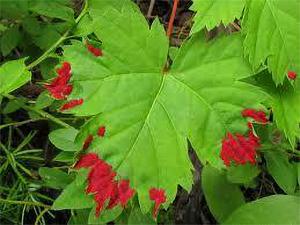
Rocky Mountain Maple, Acer glabrum Torr. grows in the Rocky Mountain states between 5,000- and 12,000-feet elevation. It is used by the Navajo to treat swelling and rheumatism.
Also, look for:
- Valeriana edulis (Western valerian)
- Fumaria officinalis (Fumitory)
- Selenicereus grandiflorus (Night-blooming cereus)
Plants Found Throughout the US
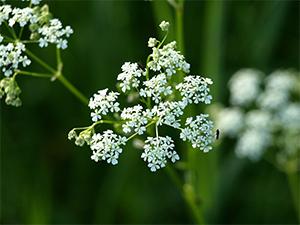
Yarrow, Achillea millefolium L., is well known for treating wounds, digestive problems, infections, and inflammation.
Its use as a sedative and for treating asthma and high blood pressure has been studied and documented.
Yarrow is found in every state across the US and in Canada. In New Mexico and southern Colorado, yarrow is called plumajillo.
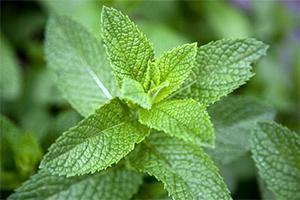
Mint, hyssop. With the exception of pennyroyal, mint is a beneficial medicinal herb.
It grows across the United States in different varieties.
Mint is helpful for soothing headaches, treating nausea, reducing fatigue and anxiety. Its antiviral properties make it useful for treating colds and the flu.
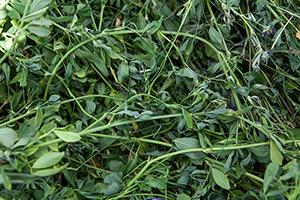
Alfalfa is an effective treatment for morning sickness, nausea, kidney pain, and kidney stones. It is a diuretic and stimulant. It also reduces cholesterol.
You can eat the leaves straight from the field, but the supermarket alfalfa sprouts also do the job. You’ll find them in most states of the US.
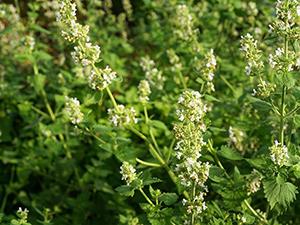
Your cat goes crazy for catnip, but did you know it is useful for you also. Use it to relieve cold symptoms, break a fever, and apply it as a poultice to stop excessive bleeding and swelling.
Catnip also treats gas, stomach upsets, and migraines. It can stimulate uterine contractions, so don’t consume it if you are pregnant. Catnip grows across the US.
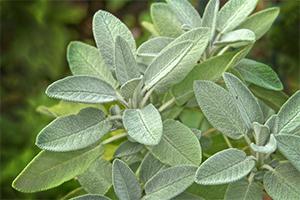
Sage is widely considered to be one of the world’s healthiest foods. It is anti-inflammatory, anti-oxidant, and antifungal.
It acts medicinally to relieve cramping, digestive illnesses, diarrhea, fights colds, relieves excess phlegm, and mucus.
Use it as a poultice to reduce inflammation and swelling, treat cuts and burns, and kill bacteria. Sage grows best in zones 3 to 8, but it can be found across the US.
You will find many more medicinal herbs in your local area. Learn about the medicinal herbs that grow in your area and where to find them or start your own medicinal herb garden. Research your herbs and know their uses and limitations, but most herbal remedies used correctly, are effective without the side effects found in many modern medicines.
Are you aware of the medicinal herbs in your neighborhood and state?
Tell us about your experience with local medicinal herbs or growing a medicinal herb garden. By sharing experiences in the comments below, you can help and inspire others.
You may also like:
Similar to Morphine: The Best Natural Painkiller that Grows in Your Backyard
Stop Spending Money At The Pharmacy By Growing These 10 Plants (Video)

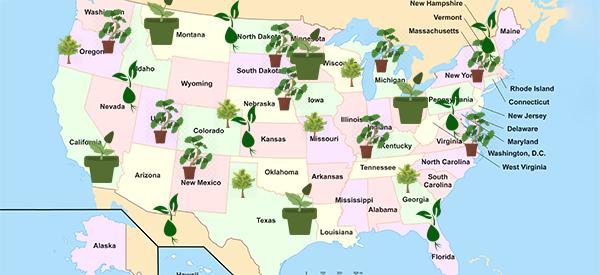














You left out the most important weeds of all time … hemp and cannabis
You should use the regular names of the plants, along with the scientific names. I didn’t recognize most of them. It’s a good thing I have a copy of The Lost Book of Remedies.
Regular names are often local names. Plants can have several regular names but Indy one Latin name.
Learn the official names along with your local names for best results.
Missing altogether is my Gar-den (now I guess called the Gar-bage) State. Too much toxic waste?
To the writer.
Diane,
Thank you for the extensive article.
Native to Arizona:
American Holly
Black Walnut
Cattail
Ginkgo biloba
• Goldenrod
• Hawthorn
• Indian Pipe
• Juniper
• Maple
• Oak, Red, Gray, and White–and blue oak (which is tannin-free)
• Rattlesnake Root
• Staghorn Sumac
• Sycamore
• Blackberries
• Calèndula
• Echinacea angustifolia
• Fraxinus americana
Roses
Wild Licorice
And a host of others. niio
I created card decks of edible and medicinal plants. All of them can be found in Utah where I live and many can be found multiple places including dandelion and purslane. My card decks give information for 60 plants. I hope to create at least one more deck for a total of 90 plants. So there are many more in my area than listed here.
How did you locate these? I also live in Utah.
I received an email notification that someone responded to my comment but I don’t see it here. To answer that person’s question: I have a degree in horticulture and have hiked around various parts of Utah learning about wild plants as part of one class. I also hold wild herb walks and teach classes about wild edible plants. If you click on my name it goes to my website.
Excellent idea to make decks of playing cards. I wish there could be a deck for every state or region of the US.
Love this as I am reexamining what I plant in garden this spring. Great idea to use cards!!!! If u can share somehow that would be awesome, thanks
Some of the restless natives in the PDRK would like to divide the state into two parts while the other restless natives want to whack it into four parts. I am a member of the four-part harmony.
California has several really distinct weather patterns and the flora that grow in them is significantly different. This article lumps the entire coast of California in with coastal Oregon and Washington. Not even close.
From Point Conception south, coastal California is Mediterranean in climate to semi-arid desert. The north coast of California and the Oregon and Washington coast are similar in climate. When one gets to the area west of Seattle to the Canadian border, it become rain forest similar to that found in Alaska. The flora that grows naturally in each of those separate climates is as different as frangipani and yucca.
I didn’t see white sage listed as growing in that region, but white sage was an important medicinal for the Chumas and other Indians in California. I suspect it also grows in western Oregon and Washington.
I realize it is difficult to write a significant treatise that deals with a topic as extensive as native North American medical plants and their geographical range. I found that to be true in writing a simple article on the bicycle as a viable bug-out vehicle. I had to break it up into four segments. Perhaps Diane might attempt that with this article and expand it to smaller geographical segments of the country.
Northern Arizona is on another planet from Southern Arizona. New Mexico is the same as is the Sierra Nevadas from the Northern Sonoran Desert which comprises portions of Imperial County, San Diego County, Riverside County, San Bernardino County, parts of Kern County and Los Angeles County also parts of Inyo County. That’s one of the four states that would be created if us four-parters got our way.
I’m pretty sure burdock & cocklebur are two entirely different plants. Cocklebur as I know it is an inedible noxious annual weed. http://www.indefenseofplants.com/blog/2017/9/17/understanding-the-cocklebur
Quote from the article linked to: “Sadly, cocklebur can become the villain as its burs get hopelessly tangled in hair and fur. Also, every part of the plant is extremely toxic to mammals. This plant has caused many a death in both livestock and humans. It is an ironic situation to consider that we are so good at creating the exact kind of conditions needed for this species to thrive. Love it or hate it, it is a plant worth some respect.
Elderberry not on the list. Other than Echinacea which keeps me from getting flu and colds (30% of common colds are caused by various Corona viruses, by the way) I don’t use any of the medicinal plants because I have always had the blessing of good health. But as Covid19 appears to be getting a foothold in the DPRK I think I’m going to add Elderberry (Sambucus canadensis) to my daily diet. A growing number of people are recommending it for the prevention and treatment of respiratory viruses. Well, I forgot I drink Roselle every day for my bp, Elderberry tastes a lot better, I’m sure, Roselle tastes like somebody else’s dirty socks.
Roselle is supposed to taste like cranberries. I don’t like elderberry because the plant is so toxic pigs rooting around have died. The berries do make a good wine, tho. niio
Yes. It makes fantastic wine! We have elderberry everywhere around where I live and it has been used for wine a very long time going back to at least the 1800’s for sure and probably the 1700’s.
Native American women would pack a jar 3/4 full of berries, then pour boiling water over it. It was capped with cloth and damp clay, then buried till winter solstice. According to PC, Native Americans had no idea about booze before the evil white man got him drunk, stole everything and left him to die (stop an catch your breath from the giggle fits 🙂 When the old women wanted brandy, they had men haul jugs up the mountain to freeze. At home, they drained off the alcohol. this is where Granny Clampet learned about rumatiz medicine. niio
Well. I double checked Elderberry at foragingtexas.com and evry part of the plant except the flowers and berries is poison. You’d think a pig would know that…
Mike: Pigs learn from their mother and other pigs. It was only 10 or 15 years ago old lady Voss, southwest of Tucson figured out how to get livestock to eat mesquite leaves. when hungry, all livestock will taste goat rue, and it’s usually their last time to eat anything. niio
I make elderberry syrup every year to ward off colds and flu. It’s antiviral. I take a teaspoon everyday. The berries are toxic raw…they need to be cooked and then the syrup from that is not poisonous…it’s pretty delicious.
Here is a recipe I have used although now, I add a few other things:
https://blog.mountainroseherbs.com/elderberry-syrup-recipe
Hopefully, I will have enough for next two months. You can also buy elderberry syrup or gummies at the store. My Walmart has it…
I am personally taking it everyday along with a couple of juniper berries, also antiviral.
There is also a lovely elderberry flower syrup that is used for cocktails…not sure of the potency of that though.
Xx
According to a native plant “expert” from whom I took a class on medicinal plants of Coastal California, the fruit of the elderberry plant is not poisonous, it is the seeds that are poisonous but not very. To prove his point he ate several elderberry fruit in front of us and also swallowed the seeds. He said that one would have to eat a lot of elderberry seeds in order to have the seeds be fatal. I know his exercise was not fatal as he is still teaching classes two years later.
He also said the same of apple seeds and other fruit of the same genus(?)
The rumor when I was a kid was that apple seeds would grow inside you and rupture your insides. Same with watermelon seeds. So, the rumors were sort of true except the seeds wouldn’t grow but if you ate enough of them you might get a case of food poisoning.
Eating raw elderberries can cause them to come out when end or the other. Although not deadly it can be very unpleasant.
CA: Red elderberries, yes, they’re said to be toxic, but not native, AKA blue elderberries. Every other part of the plant, yes.
http://www.eattheweeds.com/elderberries-red-white-and-blue/
From the bottom of the page, red elderberries.
Red Elderberries
Red Elderberries, Sambucus racemosa
Some references say red elderberries are edible, some say they are not. Bradford Angier, a well-known Canada-based forager, said eating a lot of raw, whole, red elderberries gave him “digestive upsets.” Angier lived off the land for years at a time, so he is a man of practical information. Research does clarify this and says deseeded ripe, cooked red elderberries are edible. In Volume 30, Issue 6, of the June 2003 issue of the Journal of Archaeological Science, red elderberries are discussed. It says:
“In this article, we examine the use of red elderberry fruit at site 35-TI-1, a late Holocene village on the northern Oregon coast, where more than 68,000 seeds from this fruit have been recovered. Despite the fruit and its seeds being somewhat toxic, red elderberry was widely used both ethnographically and during earlier periods. Its ease of harvest, nutritional value compared to other fruits, and the need to remove its toxic seeds prior to consumption result in red elderberry being well represented in the region’s paleoethnobotanical record. Also, toxins in the seeds may inhibit their decomposition, allowing uncharred seeds to survive for several hundred years.”
Other researchers into “first people” diet also show they ate a lot of red elderberries — to the point of it being a staple —but removed the seeds. In another scholarly article for the Canadian Journal of Archaeology, vol. 28, 2004, pp. 254-280, it says:
Processing [red elder] berries follow[ed] operational steps including de-seeding, de-stemming, and mashing to a paste that was then eaten as a food, dried into cakes, or mixed with oil for storage (Grumet 1975: 299). Seeds of red elderberry have high levels of toxic cyanide producing glycosides and were removed after cooking or during consumption (Pojar and Mackinnon 1994: 70; Losey et al. 2003: 696, 701; Turner 1995: 14).
Three other authors say the Indians processed out the seeds before eating the cooked fruit, or spit the seeds out AND drank water to rinse the seeds out of their mouth AND drank more water than usual if they swallowed seeds. They also did not eat red elderberry “cakes” in the morning saying it created stomach ache. They waited until midday or later to eat them. And, if they ate non-ripe and or raw red elderberries they ate salmon afterwards, believing that prevented stomach aches. If this is all accurate, it suggests that ripe, cooked, seedless red elderberries are edible. The seeds contain cyanide-producing glycosides which in the gut change to hydrogen cyanide. This can cause upset stomach, diarrhea and vomiting. In large doses it can be lethal. You are on your own now, proceed with caution. Find a local expert through the Native Plant Society and ask about your local red elderberries.
Now, as if that is not enough know there is a “white” elderberry found in Australia. Its berries are white to yellow and unlike nearly all white berries they are edible. Botanically it is Sambucus (sam-BYOO-kus) gaudichaudiana (go-dih-shaw-dee-AY-nuh)
Oh….You can also make a pesticide from elderberry leaves. Boil half a quart of water and add about eight ounces of Elder leaves. Simmer the mixture for 30 minutes. Take another half a quart of warm water and mix with one tablespoon of castile soap or what soap you may have handy. Combine the soap water and the elder water and strain through a fine mesh or cloth. Use in a sprayer. It helps with attack from aphids, carrot fly, peach tree borers, and cucumber beetles. It can also be used against mildew and blackspot disease
Roselle makes a delicious hot or cold tea for BP. I add cinnamon , dried ginger to my tea just my preference. Simmer the dried roselle calyx and any additions u like for 10 mins if u added too much roselle always add more water to your liking. Some like to add honey after it cools a little. We grow roselle every yr in Fla.
K N: I’m in Arizona and got some seeds. Hope it works out. So far, since the bighorn fires, anything going in the garden has been wrecked by hungry birds. It’s also called cranberry something. niio
Not much on the NW US
Is this good?
https://www.fs.fed.us/pnw/pubs/gtr513/gtr513a.pdf
https://www.projectnoah.org/missions/12380629
https://forestmedicine.net/store/pacific-northwest-medicinal-plants
niio
Nicole, I have been spending the last 5 years identifying wild edibles and medicinal plants here in the northern Cal area. I have to be honest with you, there is a lot here as well. Some of the varieties include St. John’s Wort, Yellow Monkey Flower, Field Service Mint, Burdock, and so much more. Next time your in the area, spend some time exploring the area just west of Lake Tahoe, you may be pleasantly surprised. Take care, and God Bless
How about NW Florida?
It would probably take a book or several books to list everything. I’m sure each state has some type of website or books that go into further detail.
Dave: there’s an old book, free, online somewhere on the Seri Indians’ herbals. I know the library in Phoenix had a copy. How are folks up your way? down here, we’re all getting a little angry about this crap. niio
That picture of yarrow must be a mistake. Yarrow doesn’t look like that. That picture looks like Hemlock. You don’t want to mess with Hemlock!
KDC? No pix of yarrow. Was it on another page? niio
NO COMMENT PLEASE SUBSCRIBE ME TO YOUR EMAIL NOTICES Thank you
I live in East Texas swamps on the Gulf Coast. I am surrounded by coastal marsh, swamps and then Galveston Bay to give an approximation of my area. I can find nothing on plants for this area. I have asked the Zoo, Arboretum, the science museum, Creek Stewart, Dave Canterbury and it seems no one has actually concentrated on the swamp gulf coast. Does anyone have any information about good plants bad plants for this particular region?
Thank you,
BB
https://www.ehow.com/about_6599177_wild-edible-east-texas-plants.html
https://gearweare.net/10-fall-edibles-around-the-gulf-coast/
https://www.houstonlandscapers.org/texas-native-plants/
niio
EXCELLENT LIST! Although, California Poppy is not an opioid, though it is part of the extended poppy family.